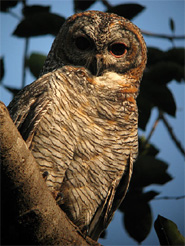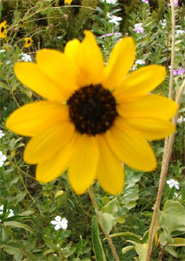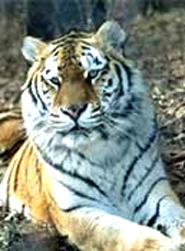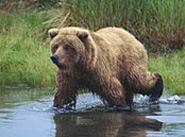»» Bandhavgarh National Park
Bandhavgarh is covered in 437 sq. kms / 44,884 hectares/ 168 sq. miles. In 1968 it was established as a National Park and extended in 1986. Finally, in the year 1993, it became a Tiger Reserve.
Bandhavgarh National Park is located in Umaria district of Madhya Pradesh. Bandhavgarh was declared as a national park in 1968 when the Maharaja of Rewa handed over the area to the government for it's formation. Bandhavgarh National Park consists of a core area of 105 sq km and a buffer area of approximately 400 sq km and its topography varies between steep ridges, undulating, forest and open meadows. Bandhavgarh National Park is also known for the white tiger country and has the highest tiger population density all over India.
The Bandhavgarh jungle, when it is large enough, becomes a living self-sustaining organism providing its own climate, atmosphere, water and nutrition through its recycling systems. It even has a sleep wake cycle. As more light fills the sky, Bandhavgarh begins to awaken.
Topography of Bandhavgarh National Park :
Much of the park is covered in Sal forest, replaced by mixed forests in the higher elevations of the hills. It is only in the slightly higher reaches that it changes to a more mixed vegetation of sali, saj, saja, dhobin etc. In the northern region of the park, there are vast stretches of grasslands and bamboo forests. A lot of this is what appears to be young bamboo, which can be seen from it's green and slim appearance. This northern region also consists of a series of rocky ridges with deep crevices cut by perennial streams. In the south, the extensions, which were included into the park in 1986, consist of low hills covered with forest but interspersed with grasslands that were formerly agricultural land. The central portion of the park, which consists of the original 106 square kilometers and the fort, is still the main sighting area. This area consists of 32 hills and also some marshy stretches divided by large grasslands and a few water bodies.
Wildlife in Bandhavgarh National Park :
Rhesus Macaque Hanuman Langur Golden Jackal
Wolf Bengal Fox Dhole Sloth Bear Ratel Small Indian Civet
Common Palm Civet Small Indian Mongoose Indian Grey Mongoose
Ruddy Mongoose Striped Hyena Jungle Cat
Leopard Tiger Wild Boar
Indian Muntjac Chital Sambar
Nilgai Four-horned Antelope Gaur
Blackbuck Indian Gazelle Indian Pangolin
Northern Palm Squirrel Indian Porcupine Indian Hare
Flora In Bandhavgarh :
Initially just 105.40-sq-kms in area, Bandhavgarh with 25 resident tigers, was noted for its high-density tiger population. Today, it has been extended to an area of 437-sq-kms. About half the Bandhavgarh park is covered with fine trees of Sal, while mixed forests are found in the higher reaches of the hills. Stretches of bamboo and grasslands extend to the north. The main wildlife viewing is still done in the core of the park with its 32 picturesque, wooded hills.
Major Wildlife Attractions - Bandhavgarh :
Once a hunting reserve of the royal family of Rewa in more recent times, Bandhavgarh was declared a park in 1968. This is also the site where the fanmous White Tigers of Rewa were discovered. Wandering through the Bandhavgarh national park on an Elephant Back, the chances of seeing a tiger are quite good. Among the other wild attractions include, Nilgai, Chausingha, Chital, Chinkara, Wild Boar and sometimes a Fox or Jackal.
Birding in Bandhavgarh National Park :
Bandhavgarh National Park is also famous for bird watching. It has more than 140 bird species. The main bird species at bandhavgarh national park are Plum Headed Parakeet, Orange Headed Thrush, Brown Headed Barbet, Coppersmith Barbet, Common Myna, Alexandrine Parakeet, Indian Grey Hornbill, Rock Pigeon, House Crow, Carrion Crow, Little Egret, White Rumped Vulture, Indian Robin, Olive Backed Pipit, Dark Black Crow, Laughing dove, Greater Cormorant, Malabar Pied Hornbill, Long Billed Vulture, White Browed Fantail Flycatcher and etc.
Wildlife Safari in the Bandhavgarh National Park :
Visitors to Bandhavgarh are allowed into the park twice each day for 3-hour Jeep safaris, once at dawn, and again in late afternoon. These are times when animal activity is most visible. The commonly used safari vehicles are open 4WD Gypsys, which provide the exhilaration of being one with the forests & wildlife. Driving slowly on the dirt tracks is the best way of getting around and observing the animals without alarming them. Coming across one, two and possibly more tigers on these drives, is an unforgettable moment - already enjoyed by so many satiated visitors from all over the world.
Winter Timing Summer Timing :
---- Entry Exit Entry Exit ----
Morning: 7:30 hours
Evening : 15:00 hours Morning: 10:30 hours
Evening : 17:30 hours Morning: 6:30 hours
Evening : 16:00 hours Morning: 9:30 hours
Evening : 18:30 hours
Bandhavgarh National Park (Visiting Season) :
Visitors can visit the park during the time period of Mid November to mid June, still the best period to come is January-April. Park is open from 1st of October to 30th June only. After that it is closed.
BOOK YOUR TOUR |
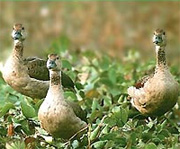
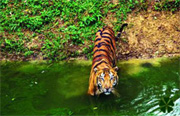
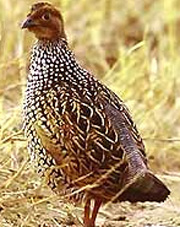
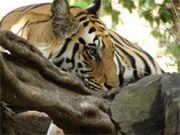

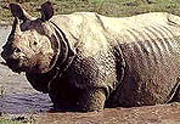
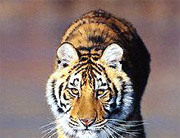
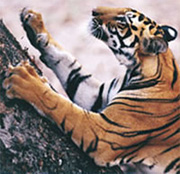 |









